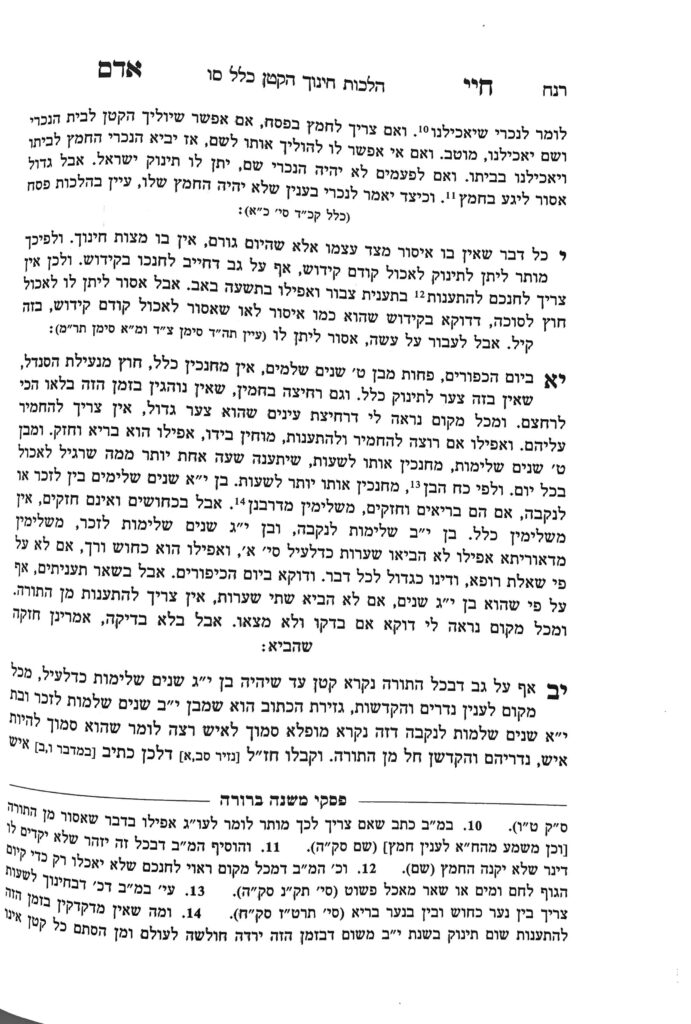We are beginning siman 12. The Chayei Adam introduces the concept of onas nedarim, the age of nedarim. Although the general halachic age of maturity for a boy is 13, and for a girl is 12; for nedarim, the age of maturity for a boy is 12, and for a girl is 11. Thus, if the child will make a neder, shevuah, hekdesh or use their mouth in any way to create an obligation on themselves, it will take effect, assuming they have the intellectual capacities to understand their obligation.
The Chayei Adam writes that onas nedarim is a gezeiras hakasuv, and is effective mideoraysa. He explains that when the pasuk says yafli neder (Bamidbar 6:2), Chazal learn out that someone samuch l’ish, “close” to the status of an adult, can already make a binding neder, and understand it to refer to a year before bar or bas mitzvah.
Additionally, Chzal learn out from that pasuk the child must be able to understand and explain their actions in order to make a binding neder. Every time that a child of this age makes a neder, we must check with them to ensure that they have understanding of their obligation, and it is not sufficient to rely on a previous check. However, once they become a gadol, their nedarim are binding even if they cannot explain their actions.
Before age 12 for a boy, or 11 for a girl, even if they understand their obligation, the neder is not binding.
Even in situations where the neder is valid, the child is not chayav oneshin until they become a gadol. Therefore, if the child does not keep their neder, they are not punished. For example, if the child is makdish something to the beis hamikdash, the item is hekdesh. If it is misused, there is an issur meilah. However, if the child misuses it, since they are not chayav in oneshin they are not chayav for meilah.
At the same time, if the child wanted to be matir the neder, the hatarah must be in front of a valid beis din. On erev Rosh Hashanah, the standard hataras nedarim is for annuling nidrei mitzvah which came about through a hanhaga tovah performed three times. Such a neder is only binding miderabanan. Therefore, a 12 or 13 year old may perform hataras nedarim with peers of the same age (only above 13 years old). However, if a child wished to be matir a “real” neder (i.e., a neder deoraysa), he would require a beis din of gedolim. Thus, we see that if even a 12 year old can make a binding neder, physical maturity is not necessary for making binding nedarim. So too, a 13 year old will have nedarim deoraysa even without physical maturity, and would require definite gedolim to be matir a neder deoraysa..
Summary
- If a boy over the age of 12, or a girl over the age of 11, makes a neder or other obligation and understands their obligation, their neder is binding mideoraysa.
- Under the above age, the neder is not binding, even if they understand their obligation.
- Above the age of bar and bas mitzvah, a neder is binding even if they do not understand their obligation.
- A boy age 13 may sit on a beis din, or come to beis din himself, for nedarim derabanan, such as the nedarim covered by hataras nedarim.
- However, if the petitioner wished to be matir a neder deoraysa, they would require a beis din comprise of gedolim.



